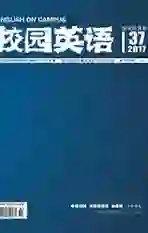Language Testing Washback Effect: A Literature Review
2017-12-21龚明
【Abstract】This paper presents the definitions of washback effect, the studies of the positive, negative washback effect, the recommendations to develop positive washback effect. It is found that the bountiful studies of language testing washback effect have been on the increase, but there is still much to be done with the width and depth of these studies.
【Key words】washback effect; direction; recommendations
1. Introduction
By reviewing the former research results, this paper makes a systemic and through study of its definitions, directions, the proposals to improve positive washback effect. It is hoped that this research could develop teachers language teaching and stimulate students language learning interest.
2. The Definitions of Washback Effect
Aldesron and Walls(1993) definition is that the extent to which the instruction and utilization of tests affect language teachers and learners to do something they wouldnt otherwise do that develop or impede foreign language learning. Bachman and Palmer(1996) have put forwarded that the term “washback effect” is similar to the term “impact”. In general, the definition of the term “washback effect” refers to the effect of a test both on teaching and learning.
3. Studies of the Direction of Washback Effect
Li Ming(2005) pointed out that negative backwash affects the teachers choice of textbooks, teaching contents, teaching methods and their attitudes towards students. In the meantime, it impacts the students learning goals, learning contents, classroom performance and choice of extracurricular reading materials.
Not a little researches have introduced that a language test could bring about both positive and negative washback effect. (Alderson & Wall, 1993;Chen Xiaokou, 2007). Gao Wei(2014) also pointed out that NMET can produce both positive and negative washback effect. And the washback effect of NMET is not limited to the third year, it also affects the years before and after the third year. NMET not only influences the student who attends NMET, but also impacts his school, his teachers and his parents, too. Whats more, some researches(Gu Xiangdong, 2007;Xu Qian, 2012) found that positive washback effect is larger than negative washback effect, but other researches(Qi Luxia, 2004, Qi Luxia & Chen Yafei, 2007) pointed positive washback effect is not larger than negative washback effect.
4. The Recommendations to Develop Positive Washback Effect
Bailey(1996) summarized the following four points:To set language learning objectives;to ensure authenticity of testing;to foster learner autonomy and to give feedback of self-assessment and testing results.Borwn(2000) summed up the above proposals. He concluded them in four aspects:design strategies of testing;content strategies of testing;logistical strategies of testing and interpretation strategies of testing.Niu Qiang(2001) put forwarded some suggestions to CET4 and CET6. For instance, he proposed that school teachers cant compel students to attend these two examinations. Even if students are willing to take exams, teachers still cant rank.However, Niu Qiangs advice is only for CET4 and CET6, it is still far from to deal with the influence of negative washback effect. Pan Feng(2015) put forwarded that to facilitate the positive washback effect, we can not simply focus on the language testing. We should pay attention to daily teaching as well. Language testing and daily teaching should be combined. The two are mutually dependent and reinforcing.
5. Conclusion
Due to language testing plays a vital role in language teaching and learning, language testing washback effect is essential to develop language teaching and learning. In the past years, great progress has been made in the study of language testing washback effect, there still remains a large space to improve. This paper reviews and summarizes some existing researches in the hope that it can help promote the subsequent studies.
References:
[1]Aldesron,J.C.&Wall,D.1993.Does washback exist?[J].Applied Linguistics14(2).
[2]Bachman,L.F.and Palmer,A.S.1996.Language Testing in Practice[M].Oxford:Oxford University Press.
[3]Davies,A.et al.1999.Dictionary of Language Testing[M].Cambridge:Cambridge University Press.
[4]陳晓扣.论语言测试的反拨作用[J].解放军外国语学院学报,2007(3):40-44.
[5]李蓂.一些现行外语测试的负面反拨效应剖析[J].西安外国语学报,200513(2).
[6]牛强.现行高校英语测试中的问题[J].外语教学与研究,2001 (2).
[7]亓鲁霞.NMET的反拨作用[J].外语教学与研究,2004(5).
作者简介:龚明(1993.08-),女,江西南昌人,硕士,就读于广州大学。
